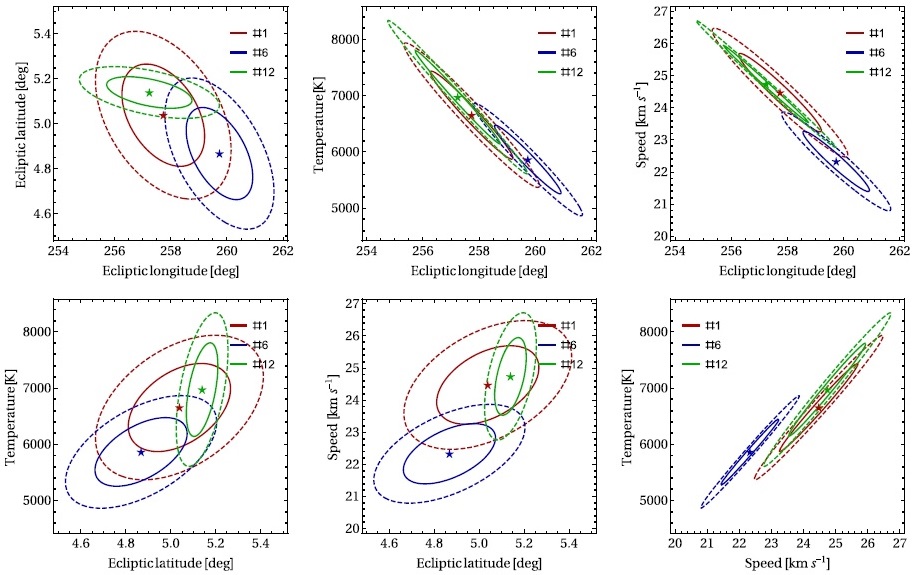
by Swaczyna et al
Abstract: This paper is one of three companion papers presenting the results of our in-depth analysis of the interstellar neutral helium (ISN He) observations carried out using the IBEX-Lo during the rst six Interstellar Boundary Explorer (IBEX ) observation seasons. We derive corrections for losses due to the limited throughput of the interface bu er and determine the IBEX spin-axis pointing. We develop an uncertainty system for the data, taking into account the resulting correlations between the data points. This system includes uncertainties due to Poisson statistics, background, spin-axis determination, systematic deviation of the boresight from the prescribed position, correction for the interface bu er losses, and the expected Warm Breeze (WB) signal. Subsequently, we analyze the data from 2009 to examine the role of various components of the uncertainty system. We show that the ISN He ow parameters are in good agreement with the values obtained by the original analysis. We identify the WB as the principal contributor to the global 2 values in previous analyses. Other uncertainties have a much milder role and their contributions are comparable to each other. The application of this uncertainty system reduced the minimum 2 value 4-fold. The obtained 2 value, still exceeding the expected value, suggests that either the uncertainty system may still be incomplete or the adopted physical model lacks a potentially important element, which is likely an imperfect determination of the WB parameters. The derived corrections and uncertainty system are used in the accompanying paper by Bzowski et al. in an analysis of the data from six seasons.
IBEX ephemeris in ecliptic coordinates, with the origin at theSun and 0.5 day sampling.
Pointing of the IBEX spin axis (+Z Axis) in equatorial coordinates with High Altitude Science Operations (HASO) time intervals.
Good times (GT) intervals over which counts are accumulated. Typically there is more than one interval per orbit/arc.
Corrected count rates (c_i) in used spin-angle bins (i, from 240-294 deg) for key ISN orbtis. Additionally provided for each bin: count number (d_i), throughput correction [TC] factor (g_i), duration of observations (t_i), and subtracted Warm Breeze (WB) count rate (w_i). Negative values of some count rates follow from subtraction of the Warm Breeze and backgrounds, but are consistent with zero if all uncertainties are taken into account.
Elements of the covariance matrix for all data. The matrix is symmetric. The element in the i-th row (with header excluded) and j-th column correspond to covariance between i-th and j-th count rates given in file data_vec.dat in respective rows.
